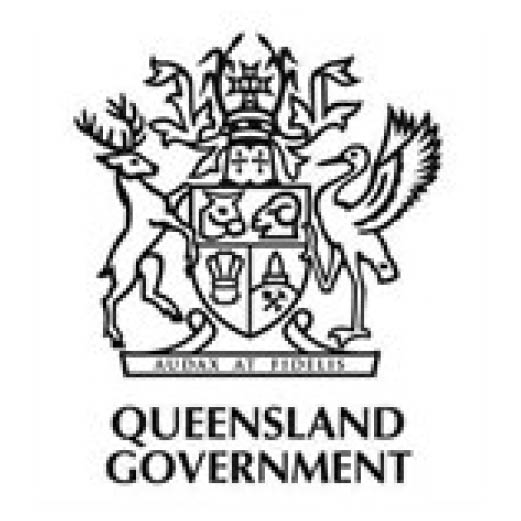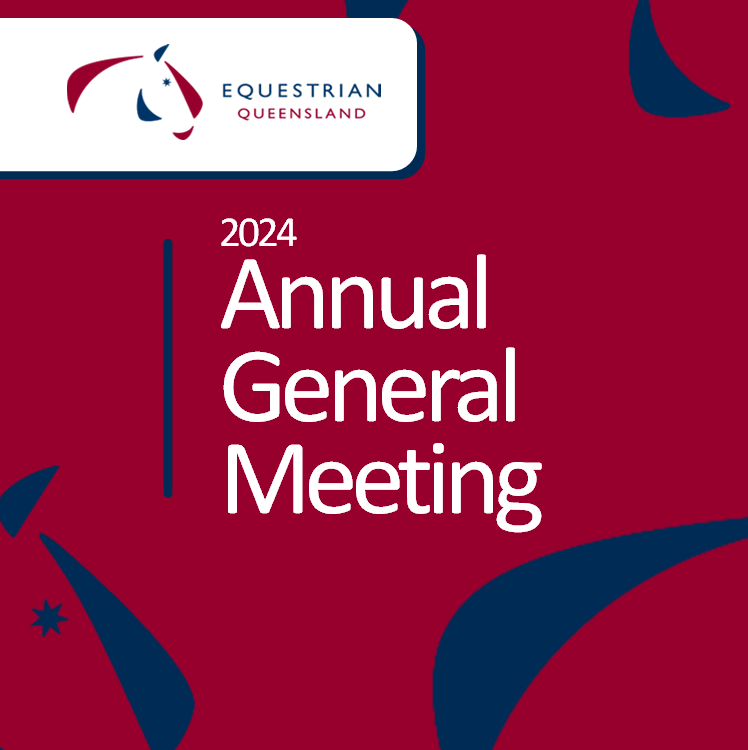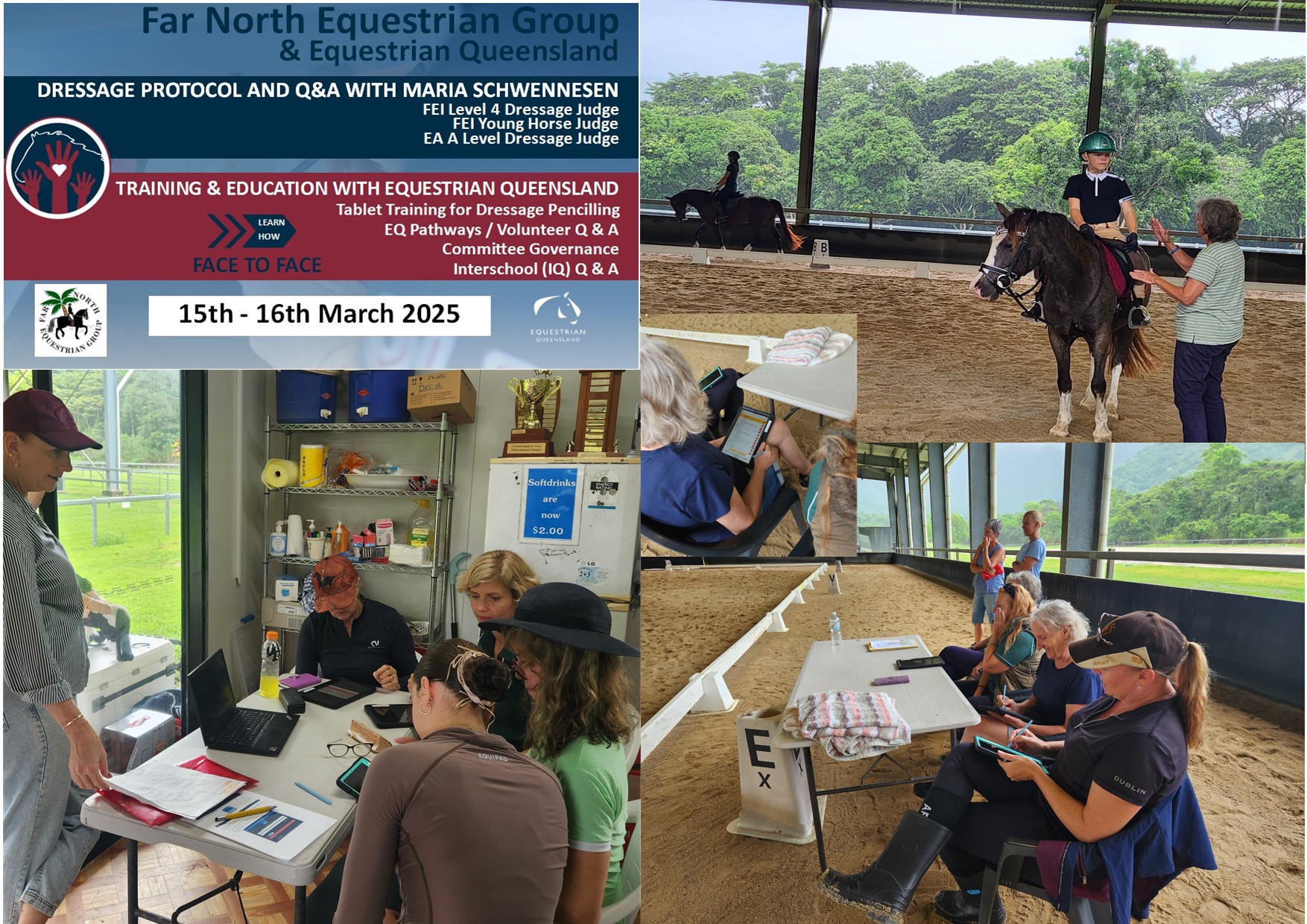To assist our event organisers, competitors and horse owners, Equestrian Queensland have created resources that are available for you to use and adapt for your events, as well as a range of information relating to biosecurity and quick links to essential information from the Biosecurity Queensland website.
We encourage all event organisers to start reviewing their Biosecurity Plan and make use of the EQ Biosecurity resources.
Equestrian Queensland (EQ) is committed to providing members with regular updates regarding the evolving Coronavirus (COVID-19) situation. Please refer to our dedicated COVID-19 page on our website for all recent updates.
Resources & Quick Links
|
Biosecurity Plan Template Revised 12 January 2022 |
|||||
|
Biosecurity Qld Movement Record Revised 13 May 2020 |
|||||
|
Registerable Biosecurity Entity Application Cattle Tick NSW Entry Requirements Japanese Encephalitis Information Scroll down for more information on biosecurity plans, event/movement Records, Registrable Biosecurity Entities and recommendations for participants. |
Biosecurity Plan
Preventing the introduction of an infectious disease at a equestrian event is vital. A biosecurity plan outlines the precautions taken to minimise the risk of introducing an infectious disease. All event organisers should have a biosecurity plan available at events, and should nominate a 'Biosecurity Manager' who is responsible for implementing this plan should a biosecurity incident occur.
A biosecurity plan should include:
- a veterinarian to be on call during the event
- a method of making emergency phone calls or alternative communication to any attendee. This includes participants, support persons, officials and volunteers.
- a plan to minimise public access to stable areas
- separate vehicle parking for competitors and spectators ensuring that they meet the 1.5m social distancing rule.
- single entry and exit to grounds
- adequate hand-hygiene facilities, including eating and horse-handling areas
- designated isolation area (or stable) for sick horses
- good hygiene practices for participants, event organisers, officials, stewards and volunteers
- a contingency plan in the event of a biosecurity incident is declared.
Keeping Event Records/Movement Records
Movement records are required when moving horses between properties in Queensland.
The registered biosecurity entity who keeps the animal must complete the movement record before the animal is moved. A movement record can be completed in hard copy or electronically and must include the following details:
- name of person completing the record
- place (PIC) from which the animal is being moved
- place (PIC) where the animal is being moved to and the address of the person receiving the animal
- the date of movement
- species and breed of animal being moved
- description of the animal or group of animals (ie distinguishing marks)
- any other information required by regulation (i.e. HGP status, restricted animal material feeding)
A movement record for horses must be kept by the person completing it and the person receiving the animals for 2 years after the movement.
If crossing tick lines within Queensland, you must ensure you meet the 'risk minimisation requirements' stated on the Biosecurity Queensland website and have the movement record with you. When transporting horses from Queensland to another state or territory you are required to check the requirements for that state or territory, as well as ensuring you meet the requirements for moving horses within Queensland.
For event organisers, the EQ Horse Health Declaration captures all required information for movement records.
| Movement Record Information |
| Moving Low-Risk Animals (Horses) |
| Cattle Tick Movement Regulations |
The following records are recommended.
All horses:
- registered name
- identification (brand/microchip number, sex, colour)
- PIC (property identification code), location where the horse came from as well as the location of where the horse is going
- current Hendra vaccination status
- If a tick line has been crossed, what measures have been taken to ensure horses are tick free.
All participants and people involved in the activity:
- name
- address
- phone numbers
- vehicle registration numbers.
Event organisers have a duty of care to participants and their horses. Event organisers should keep event attendance records for two years. A horse health declaration is the best way of keeping this information in one place.
Registrable Biosecurity Entity
Anyone who keeps more than 1 horse or pony must register with Biosecurity Queensland to become a Registered Biosecurity Entity (RBE). Registration allows animals to be traced if there is a disease outbreak or contamination incident.
The person registering will generally be the owner of the animals, because the owner usually has ultimate control of, and responsibility for, the animals. You must also register if you have animals located temporarily on your property (for example agisted horses, horses that are undergoing training). You will only need to register once as an RBE, not for each horse under your care.
When you regsiter as an RBE, a Property Identification Code (PIC) will be issued for the property where the designated animals are kept if the property does not already have a PIC. If you already have a PIC on 1 July 2016, you will automatically become an RBE.
You will need to renew your RBE registration every 3 years.
Recommendations for participants
Primary responsibility for biosecurity at equestrian events lies with the all attendees. All participants should be aware that you have a biosecurity obligation to take all reasonable steps to ensure your activities do not spread a pest, disease or contaminant. Participants are asked to ensure good biosecurity practices at home, and to adhere to the following:
- stay home if you are sick or have been in contact with anyone that has COVID-19
- ensure the event organisers have the details of any support person who has accompanied you to the event
- ensure practice social distancing (1.5 metres) and hand hygeine
- complete an HHD for each horse and hand it to the registration steward or secretary or the horse health official
- ensure horses are clean, and hooves are picked clean of all solid material and washed
- clean vehicles and equipment accompanying horses to remove all solid material that could contain disease agents
- not to bring sick horses to the event. Sick animals may get worse during transport and infect other horses. Visually inspect horses to be transported and check rectal temperatures on the morning of the event. If in doubt, ask your vet to examine the horse
- provide truthful, accurate information as required
- carry out instructions from the horse health official
- monitor your horse’s health throughout the event and notify the horse health official if you see any signs of illness
- if you notice strange behaviour or signs of disease in your horse, or any horse, report it immediately to the event organiser so they can determine the risk to other horses. Do not move the horse
- if you are at the event for longer than one day, take your horse’s rectal temperature regularly. A rectal temperature above 38.5 degrees suggests disease
- not to share tack and equipment, including food and water containers, between horses
- to minimise contact between horses and between other people and your horse(s). Discourage people from touching your horse as this is a key way for disease to spread from horse to horse
- not to allow horses to eat any other horse’s feed
- to take home any leftover feed or place in designated compost site
- to wash hands between horse contacts. Wash your hands with clean water, or disinfect with waterless hand sanitiser.
After the event, event entrants should:
- clean and disinfect all horse equipment and the horse transport vehicle
- have a thorough shower, wash hair and blow their nose to expel any inhaled bacterial or viral particles
- change into clean clothes
- continue to monitor the health of the horse(s)
- report any unusual signs of disease to your veterinarian
- isolate returning horses from other horses as much as is practical.










